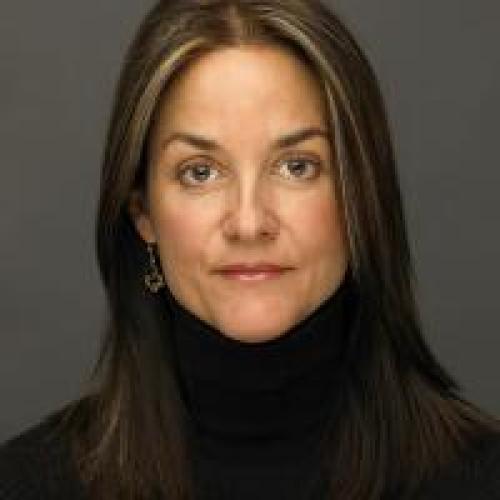
LA Times Pulitzer Prize winner and Staff Photographer Carolyn Cole reflects on the dangers journalists face covering conflicts

As a highly-decorated international news photographer who has a Pulitzer Prize listed among the many awards she has won, LA Times Staff Photographer Carolyn Cole (MA ‘14) has a unique perspective on the recently-released movie "Civil War." Cole was interviewed by the Times in April to reflect on whether the movie has an accurate depiction of journalists working in perilous conditions.
The fictional film tells the story of a group of present-day photographers and journalists covering war-torn America and their dangerous journey to the White House, where the president is besieged by encroaching rebel forces.
“It was interesting to see how they depicted an experienced photojournalist, alongside a young photographer,” said Cole. “With the decline of newspapers, journalism jobs, and the trust of readers, it’s important that the work of journalists be highlighted. Although the movie is dramatized, it touches on important themes, like the dangers journalists face in the field, ethical dilemmas, along with the physical and mental toll suffered by some.”
Journalists and photojournalists often cover stories and situations that affect their mental and physical well-being. Ohio University Associate Professor of Instruction Nerissa Young teaches a course called Journalism and Trauma. Young is an expert in journalism ethics, journalism and trauma and media law. She collaborated to develop and provide a curriculum and web portal with resources to teach journalists the best practices for covering suicide.
Cole concluded that many of the themes touched on in the movie were realistic portrayals of what members of the media often deal with.
“Although the scenarios they faced were extreme, they were plausible,” said Cole in the Times article. “Real images come to mind like that of the American civilian contractors hung from a bridge in Fallujah, Iraq, or the U.S. soldier dragged through the streets of Mogadishu, Somalia. I’ve photographed riots, firefights, mass graves and the aftermath of deadly bombings. Like all movies, the intensity of each scene is exaggerated, but the scenarios are possible.”
Cole, who started her graduate degree at Ohio University in 1985 and came back to finish it in 2014, has been a staff photographer for the Times for 30 years. Her coverage of the civil crisis in Liberia won the 2004 Pulitzer Prize for feature photography. She is a two-time winner of the Robert Capa Gold Medal from the Overseas Press Club of America, for her work in Iraq and Liberia in 2003 and her photographs of the Church of the Nativity, Bethlehem, in 2002. She has earned four World Press awards and has also been named U.S. newspaper photographer of the year three times.
When asked in the article if the threats the journalists were facing in the movie were realistic, Cole responded by naming journalists who have lost their lives while doing their jobs.
“The dangers of covering conflicts are real. Photographer and friend Chris Hondros, along with Tim Hetherington, were both killed in Libya during the Arab Spring; Associated Press female photojournalist Anja Niedringhaus was killed in a targeted attack in Afghanistan; and I witnessed a colleague grazed in the head by a bullet in Haiti, just to name a few,” said Cole. “Over 78 journalists were killed in 2023, according to the Committee to Protect Journalists. The bond between reporters and photographers can be very strong. Many of the photojournalists working in the field are people I’ve known for years. It’s a fraternity of sorts. We rely on each other, even if we might work for competing organizations. You would expect colleagues to come to each other’s aid in times of crisis. Life and death situations can show the true character of an individual. I’ve seen the results both positive and negative.”
But even with the risks, Cole says the role of journalists and photographers covering international news is important because people need to be able to see the reality of what is happening, even in dangerous situations.
“My advice to young journalists is to spend several years covering local and national news before heading abroad,” said Cole. “Good journalistic instincts can only be learned by doing. It’s better to do that closer to home.”
Cole is one of 87 Ohio University alumni, students and faculty members who have won or shared in 58 Pulitzer Prizes.
